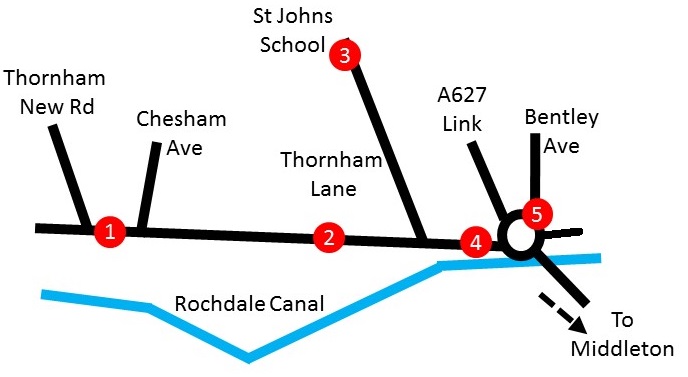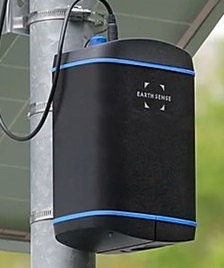You may remember we put up Nitrogen Dioxide (NO2) monitoring tubes around the area in November last year (2019).
NO2 is one of the air-borne pollutants in vehicle emissions and is known to cause health problems
Exposure to high pollution episodes can cause immediate harm to everyone by:
– Irritation of the eyes, nose, and throat
– Wheezing, coughing, chest tightness, and breathing difficulties
– Worsening of existing lung and heart problems, such as asthma.
As the heart, lungs and blood cells pump oxygen to every part of the body, they also come into contact and carry along toxic pollutants like NO2 and other noxious air-borne particulates.
The body must therefore work harder to supply oxygen and overcome the effects of these chemicals, causing the above symptoms.
This is where the tubes were located

And the results we got were:
1 40.85
2 37.76
3 25.75
4 32.58
5 33.56
According current regulations the exposure limit to NO2 is 40 ug/m3 (micrograms per metre cubed).
So one result is over the recommended limit
Not surprisingly, the monitor tube at St Johns School gave the lowest result, given that it’s furthest away from traffic on the main road.
Whilst the results are somewhat surprising we will soon be able to get a more accurate result using a more sophisticated air quality monitor, pictured below, which ‘tests’ for a wider range of substances.
The British Lung Foundation (BLF) who are supplying the new monitor are also keen to do further work with us around the health & clean air issues.
. Image: EarthSense.co.uk
Image: EarthSense.co.uk
Further information on air quality and Nitrogen Dioxide monitoring can be found at these links:
Air Quality Expert Group: Nitrogen Dioxide in the United Kingdom – Summary
Air Quality and You

